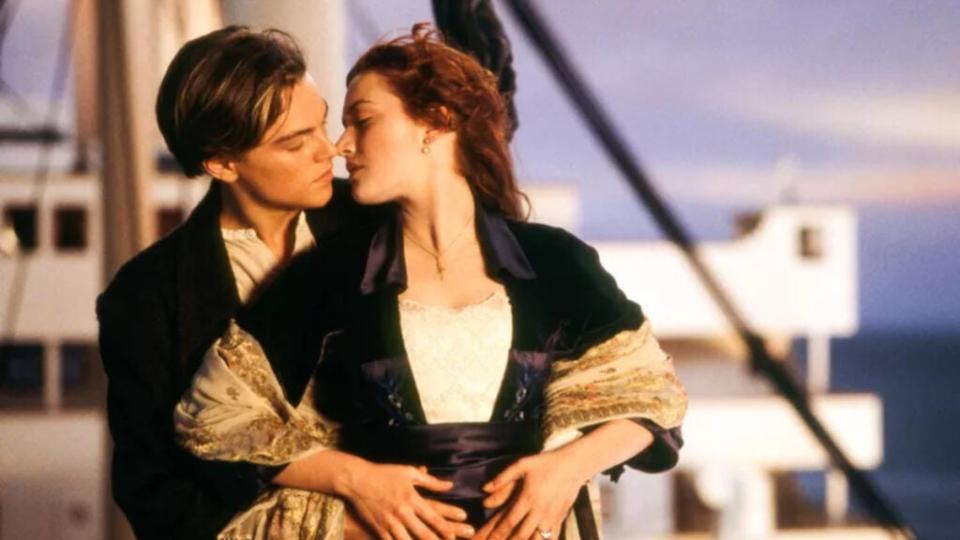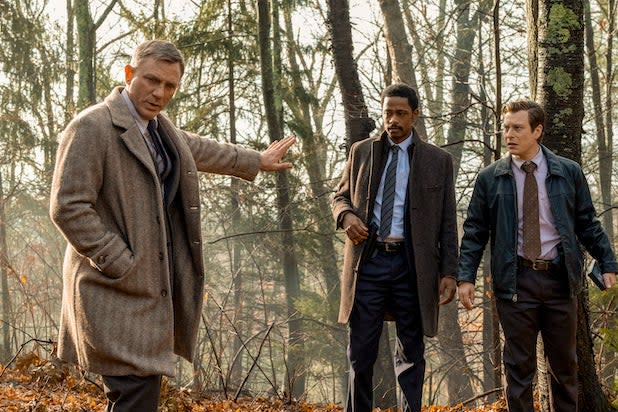7 Lessons Hollywood Should Learn from ‘Barbenheimer’
WrapPRO is free this week. See the inside scoops, expert analysis and exclusive data subscribers get daily. Click here for more information.
“Barbenheimer” weekend was an unmitigated success for the theatrical industry, powering the fourth-biggest overall weekend ever for domestic theaters. “Barbie” passed $200 million in five days following a $162 million Friday-through-Sunday launch. Meanwhile, “Oppenheimer” soared past $100 million on its fifth day of release following a jaw-dropping $82 million debut.
“‘Barbie’ and ‘Oppenheimer’ both rolled the dice on two auteur-driven films, non-sequel, non-franchise, non-superhero [movies] and the results paid off in a big way,” Comscore senior analyst Paul Dergarabedian told TheWrap.
If Hollywood takes the wrong lessons from this unusual success, we’ll probably see more grim biopics and more movies based on toys. Drawing the right lessons from these movies’ outsized performance requires a little more digging.

Films for/from/about women were never box office poison
Hollywood seems to relearn this lesson every few years. Time will tell if it might stick this time.
The blowout success of “Barbie” is another reminder that movies for, from and about women can be as successful as ones aimed at men. See also: “Waiting to Exhale,” “Titanic,” “My Big Fat Greek Wedding,” “Mamma Mia,” “The Hunger Games,” “Wonder Woman” and “Hustlers.”
“Many people assume that films made for male audiences can be enjoyed by everyone, but that films for women and girls are more niche — and that this limits the box office potential of women’s films,” said Rebecca Hains, author of “The Princess Problem” and professor of media and communications at Salem State University.
“Girl culture always has the potential for a blockbuster success,” she added. “The question is, what will it take for those who malign female audiences and their interests to recognize that these aren’t one-off exceptions to the rule?”
Marquee directors can be movie stars
“Bet on your filmmaker,” said a high-level studio insider. “‘Oppenheimer’ was a three-hour, R-rated, talky epic, but it was marketed like a summer tentpole.”
In terms of butts-in-seats appeal, Chris Nolan is a movie star. He is the brand, the franchise, the metaphorical IP who towers above whatever property or movie he deigns to tackle.
And Greta Gerwig may now have proven herself another marquee director.
Her name as the director and co-writer (alongside Noah Baumbach) of “Barbie” was an added-value element in an already appealing package. In this case, Warner Bros. sold “Barbie” as a personal artistic triumph for Gerwig, just as they successfully sold “Wonder Woman” partially as a story of Patty Jenkins’ creative victory.
Either way, the allure of a “Barbie” movie from the woman who directed “Lady Bird” and “Little Women” helped make the film a bigger event than if it had been directed by a filmmaker less well-known in the film nerd ecosystem.

A blockbuster can come from anywhere
Universal has a history of turning theoretical counterprogramming like “Mamma Mia!,” “Bridesmaids” and “Get Out” into relative blockbusters. Likewise, Warner Bros. has a track record of turning less-conventional movies like “Magic Mike,” “American Sniper” and “Crazy Rich Asians” into mainstream smash hits.
In many of these cases, a key element was a promising or prestigious filmmaker crafting a crowd-pleaser that combined mainstream tastes with a specificity that made it stand out from the pack. But regardless, the lesson was that any film can be an A-level event.
As we saw pre-COVID with releases like “Baby Driver,” “Knives Out” and “House of Gucci,” combining a marquee director with an all-star ensemble, an easy-to-explain elevator pitch, decent reviews and the promise of either escapism or cinematic razzle-dazzle can still result in a successful adult-skewing or non-franchise theatrical release. “Barbie” and “Oppenheimer” had all five in spades.
Imax helps but it’s not essential
Christopher Nolan’s “Oppenheimer” earned $35 million, or 20%, of its $180 million worldwide debut from Imax theaters alone, giving the company a $46 million global total and its fourth-best weekend ever.
However, “Barbie” concurrently notched the biggest opening weekend ever for any film that A) didn’t have Imax screens and B) wasn’t available in 3-D. The appeal of large-format auditoriums helped for “Oppenheimer.” Meanwhile, the blowout figure for “Barbie” showed that not getting those premium-format screens is far from an automatic commercial disadvantage.
“The success of Barbie shows the value of creating big movies that don’t ‘demand’” premium large formats, said Boxoffice Pro Chief Analyst Shawn Robbins. “Stereotypical female-targeted blockbusters like ‘Fifty Shades of Grey’ are less likely to be seen as essential to see in Imax or Dolby.”
A wider variety of “big” movies, both in terms of scale and demographics, would mean less release date jockeying for that all-important plf placement. If, say, “World War Z” desires Imax screens but “Monsters University” does not, that would increase the comfort that studios would feel in terms of placing movies alongside each other on the release calendar.

Competition is possible and necessary
Neither Universal nor Warner Bros. backed out of the showdown because they knew they were chasing different audiences. In a healthy marketplace there should be room for more than one would-be event movie on a given weekend. That’s doubly true if each doesn’t target the same demographics. This demands a wide variety of “big” movies that aren’t all mega-budget, male-skewing, fantasy franchise action flicks.
“The industry needs to be more aggressive about putting out more than one major movie at a given time,” said Robbins. “That also includes the understanding that not every crowded weekend will deliver a Barbenheimer-style event.”
Such a strategy will inevitably offer more diverse voices and perspectives. It will also prevent a situation where the health of the theatrical industry is dependent on an overperformer.
Not every upcoming toy-based movie is going to be a blockbuster
Mattel has been planning films based on the likes of Hot Wheels and Polly Pocket for years. However, Barbie is different. It’s a much-beloved 65-year-old brand that never had a big-deal movie. Its success, in terms of IP, filmmakers, marketing and zeitgeist, makes it the best-case scenario and an unlikely-to-be-repeated unicorn.
“Barbie” is a specific melding of IP and artistic vision. That means Mattel and friends must budget their next batch of toy-based movies so that they don’t have to earn anywhere near what “Barbie” did/will. If Daniel Kaluuya’s “Barney” movie breaks out to a surprising degree, terrific. However, the next batch of toy-based films shouldn’t cost so much that they have to break records to break even.
“Barbenheimer” is the exception rather than the rule
The most important lesson is that “Barbenheimer” is not the kind of thing that can be replicated.
“The triumph of the ‘Barbenheimer’ phenomena this past weekend shines a spotlight on the integral role community plays in theatrical releases,” Legion of M co-founder and CEO Paul Scanlan said.
Warner Bros. painted the world pink and gave us “This Barbie is…” character posters that lent themselves to participatory marketing. Universal, meanwhile, did the work selling “Oppenheimer” as the adult-skewing event movie of the summer.
The real surprise was how the “Barbenheimer” online meme chatter spread into the real world. Those on- and offline celebrated both films rather than pitting them against each other as culture war totems. That’s buzz, along with both films being well-reviewed crowdpleasers, you can’t buy.
“Big studio budgets might nourish it, but the core energy, the real catalyst, is the community of moviegoers,” Scanlon said. “Their engagement catapulted the two films into the epicenter of nearly every conversation this weekend.”
“Barbie” and “Oppenheimer” broke out last weekend because they were unlike anything else in the marketplace. They promised originality, high quality and specificity within existing brands or genre trappings.
Whatever films are successful in terms of tapping into this kind of Barbenheimer-style good-natured cinematic celebration will likely be as unlike “Barbie” and “Oppenheimer” as “Oppenheimer” was from “Barbie.”
The post 7 Lessons Hollywood Should Learn from ‘Barbenheimer’ appeared first on TheWrap.


